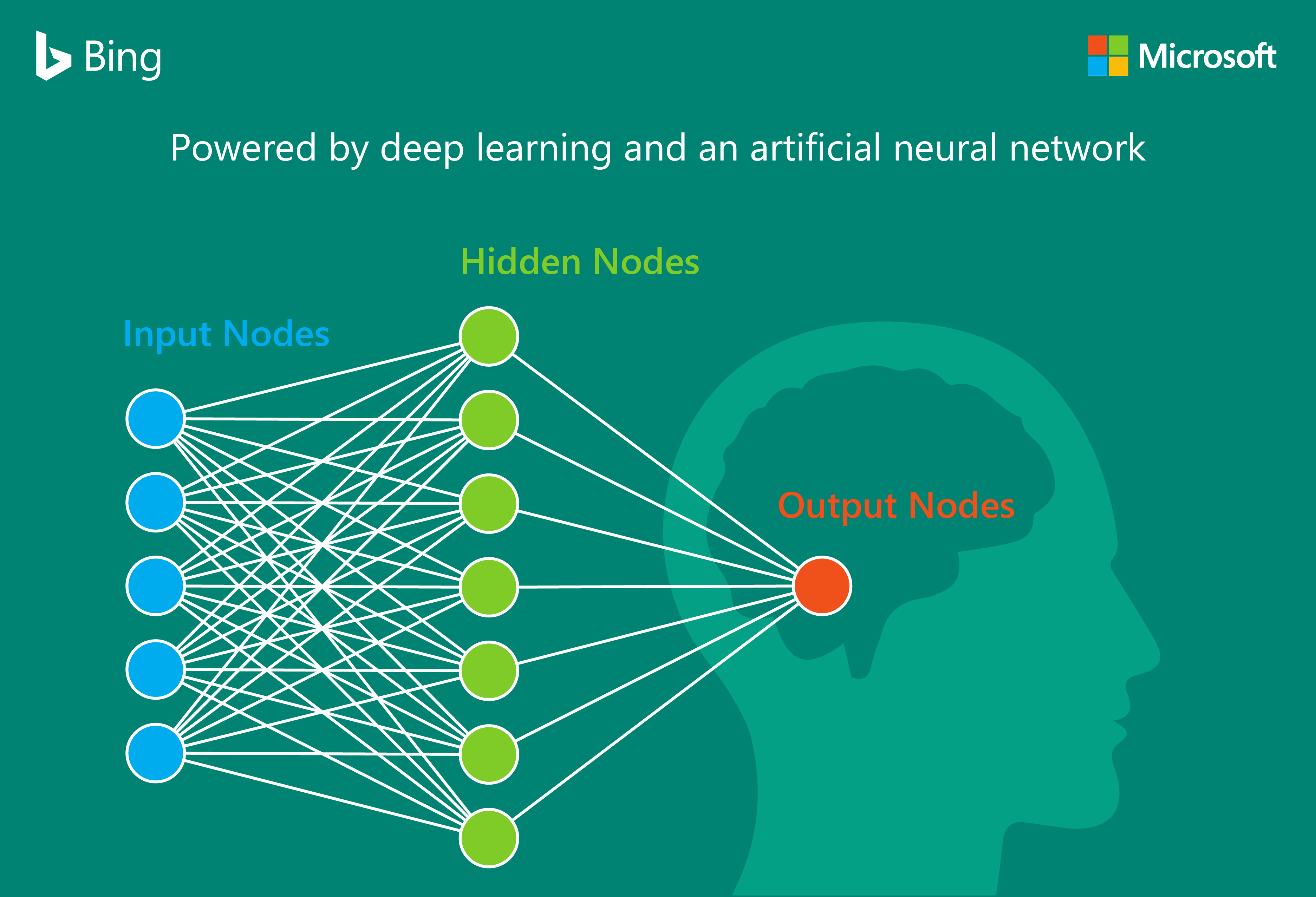The innovations that are driving Bing's growth
A wide gap has always existed between how we talk with each other and the way we communicate with search engines. If we were to talk to search engines like regular human beings, we’d expect them to understand us at the same level too. Say, you asked a friend to suggest a nice restaurant. She might suggest the best vegetarian places to eat since she already knows you don’t eat meat. Wouldn’t it be great if a search engine could do the same? Well, now it can.
A combination of deep learning (DL), artificial intelligence (AI) and conversational interfaces (CI) are powering Bing to become a smart search engine that learns and adapts to information much the same way humans do. Bing isn’t just being designed to search, but to dig deeper and learn. Its core architecture isn’t based on keywords and indexes, but on an intricate and intelligent information fabric.
Bing knows what you mean
Query responses on search engines often tend to have inappropriate or useless information that reduces the utility of the search results. For quality search results, the engine should be able to process requests within the context and craft responses based on your personal preferences and history.
At Microsoft, our researchers have been hard at work coming up with solutions for this with breakthroughs in DL. The search engine is linked to an artificially recreated neural network based on the pathways of neurons in the human brain. This allows the machine to move beyond simply storing data and actually making sense of it by creating a pattern.
A key advantage of this approach is that the machine can be trained to store, retrieve, and analyse data organically. It dissects every bit of information, stores it on varying levels or ‘nodes’ in the neural network, and creates a pattern of the memory to deeply understand the digital world. The engine can now pick up slang and vague metaphors people commonly use. It can understand subtext and respond to innuendos, while preventing inappropriate responses, abusive language, and spelling mistakes from occurring in search results.

DL is set to change the way Bing recognizes and analyses information. By training the engine to think and sort data in a way the human mind would, Bing has assimilated a degree of contextual awareness. As this exciting new field develops further, search will become smarter and as intelligent as ever. Recently, after researchers presented the network with a new set of 4000 real-world search queries from Bing, the model achieved an accuracy of 92%. This is significantly better than the performance of pattern-based or other state-of-the-art machine learning based techniques.
Seeing through the image
Considering the trillions of images that make up the internet, search results can be dramatically improved when the search engine can actually ‘see’ and understand the image. Bing’s contextual image graph is a powerful tool that helps organize the images and index them appropriately. The engine can detect images and infer content based on where the image is placed on a webpage, how visitors interact with it and the annotations left behind by partners, making the search smarter and faster.
Predicting trends
Predictive analytics is at the confluence of machine learning and big data and ‘Bing Predicts’ is perhaps the most fascinating application of Bing’s search data. A wealth of high-quality data passed through a sophisticated algorithm can help recognize patterns and extrapolate trends. In other words, Bing can smartly put together all the web activity, visitor sentiments, and user behaviour data to make surprisingly accurate predictions about future events and long-term trends.
Bing is an ‘intelligent’ search engine. Instead of picking out specific words and guessing what the user is looking for, Bing’s powerful natural language processing, image recognition, and predictive capabilities allow it to understand and react to queries in multiple languages just like human beings. Not only does this serve better results to users, it also helps advertisers and businesses navigate the vast pool of search-related data.
Conclusion
Intelligent search is driven by machines that closely replicate the way humans think and learn, recognize images, speak sentences, and detect patterns in data. Bing’s rise over the years has been powered by innovations that have made computers more cognizant. This strong technical base and sophisticated architecture will undoubtedly continue to drive Bing forward.
Comments
- Anonymous
May 12, 2017
The article managed to fiddle with my imagination in an extremely positive way. I believe that smart search will revolutionize and change user profiles and especially of companies that advertise and use the worldwide computer network as a business card and even as the main gateway to their potential customers.Look how interesting: Are competent Microsoft researchers considering contemplating only the physical personal user? Will there be a treatment of the corporate information to give greater visibility and to improve the ranking in the results?I believe it is super important to have a comprehensive view that can contemplate the two segments. What exposes the information and those who make the searches. I have been working on pre-semantic treatment, and I was able to generate an algorithm capable of replacing the AVLs, breaking even the 0 (log n) B-trees paradigm. In this way, it is possible to optimize the search with a new storage structure.It was a pleasure to read this article and to note that we are close to major revolutions in search engines and information processing. Congratulations to Bing's team!